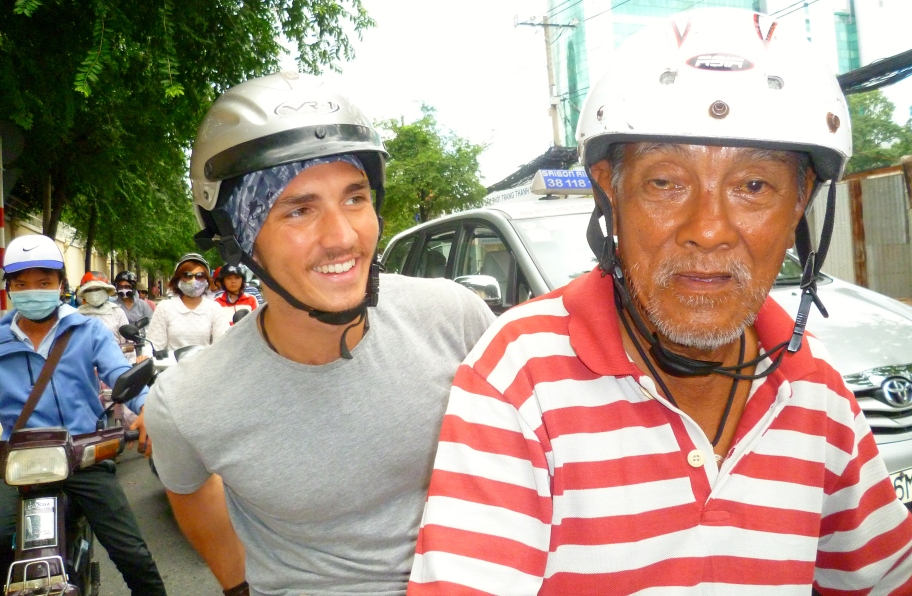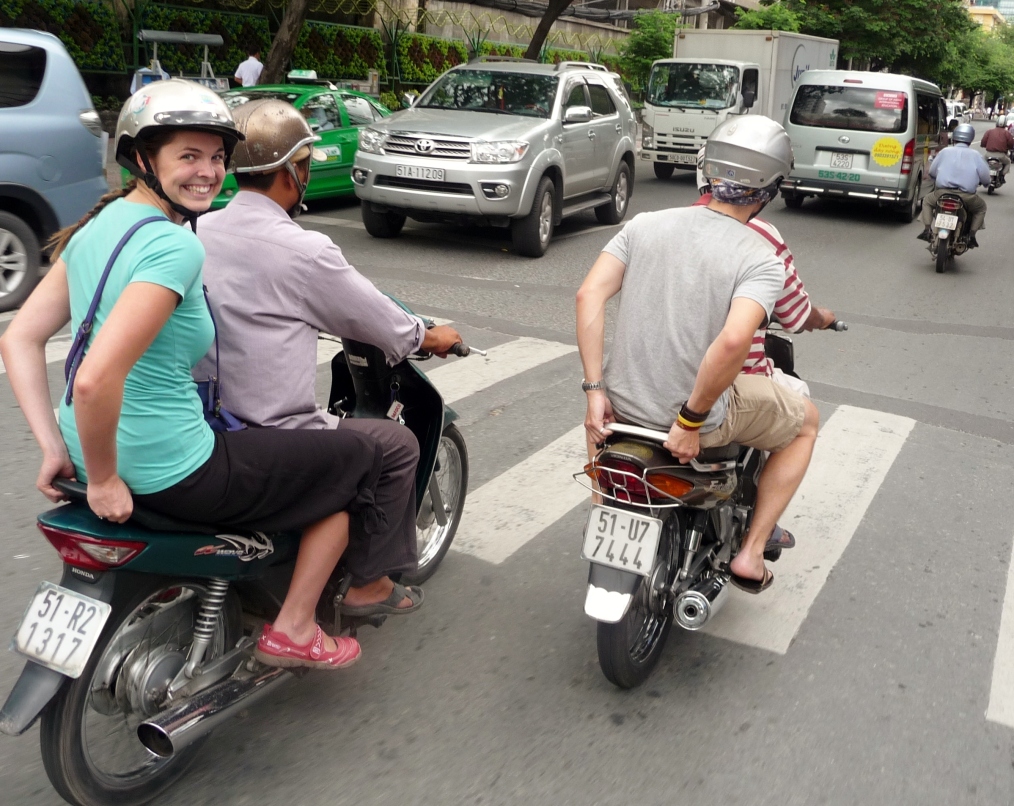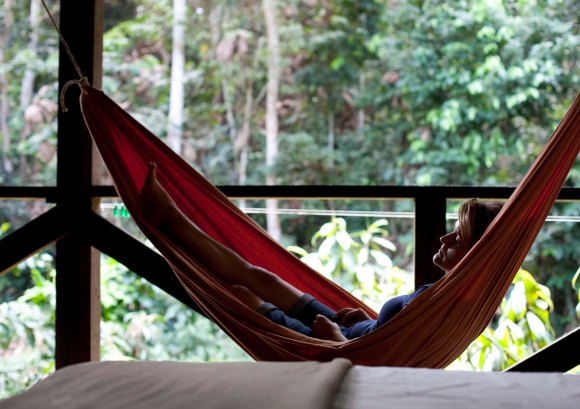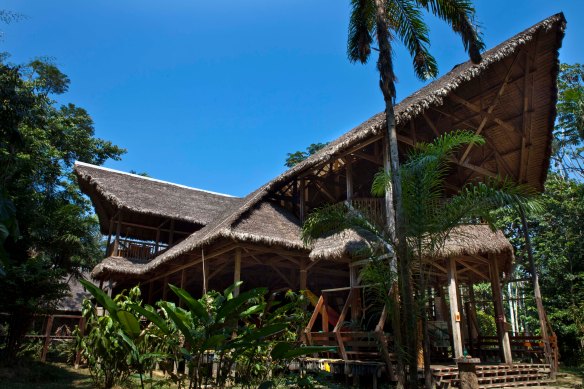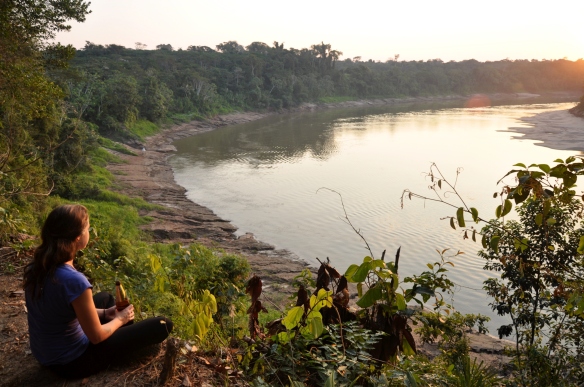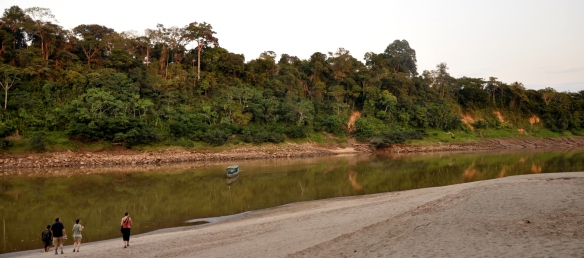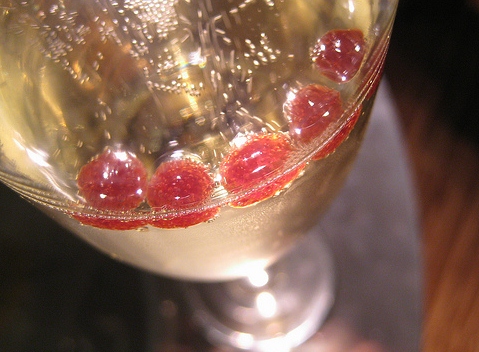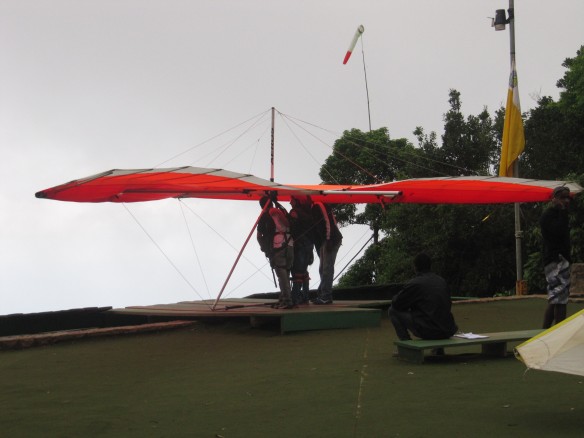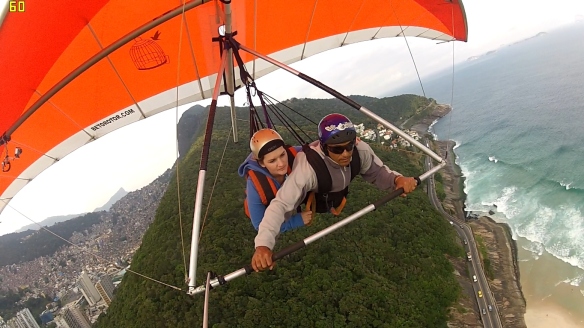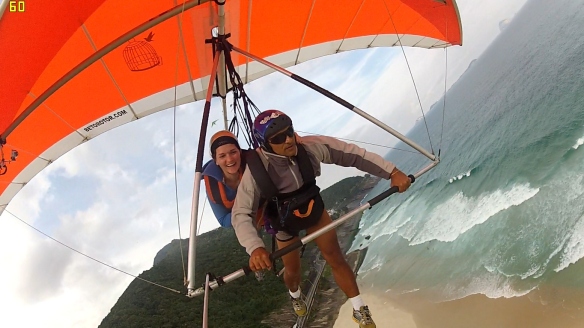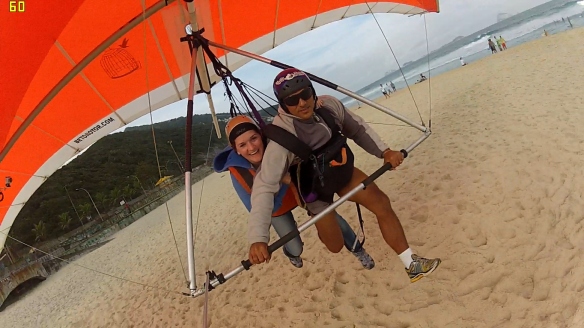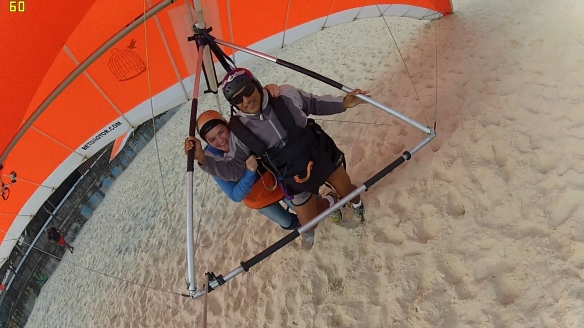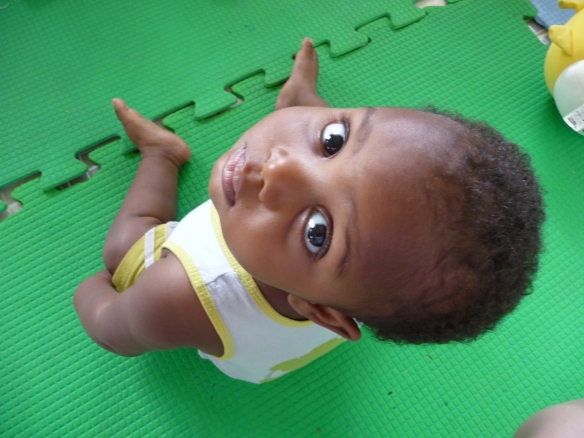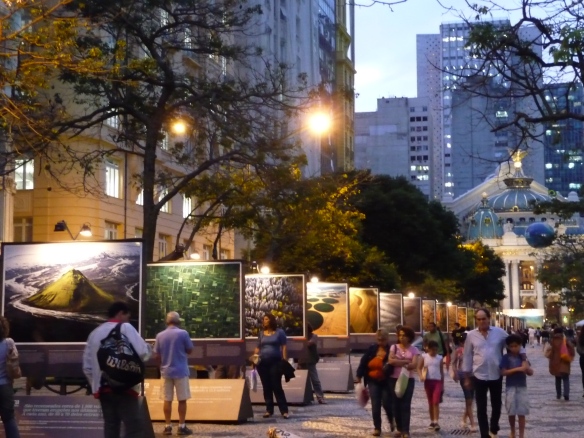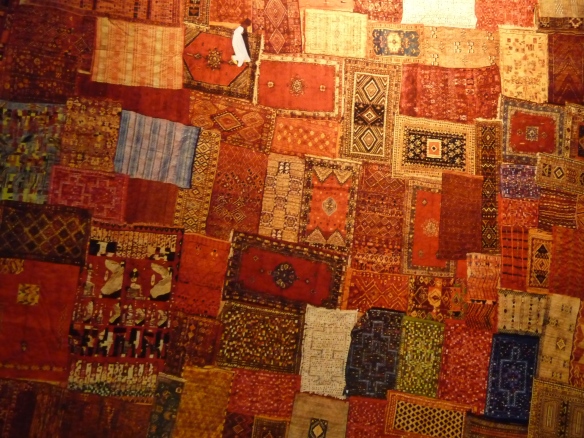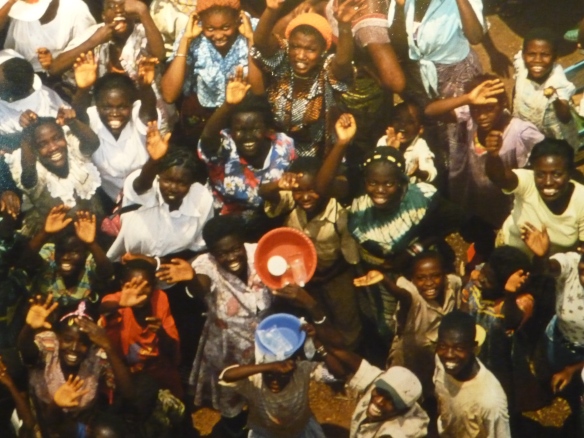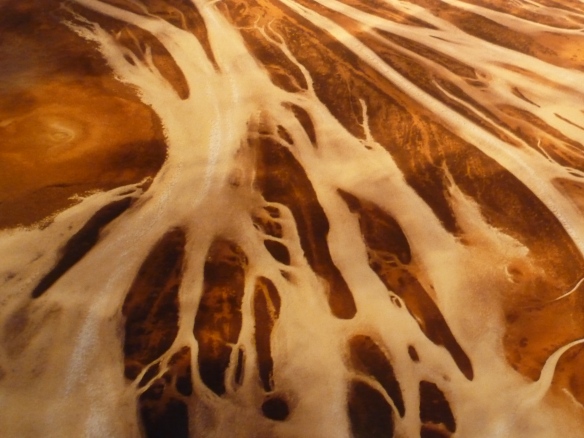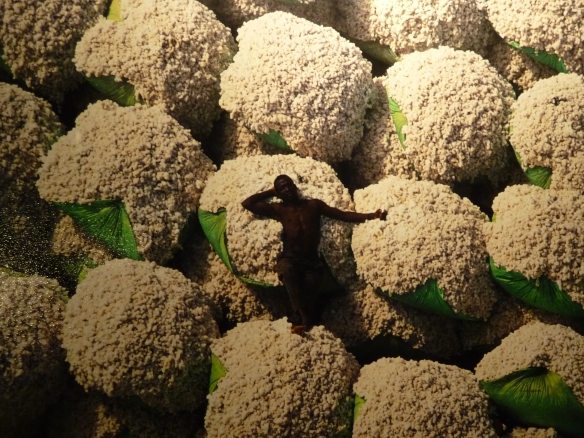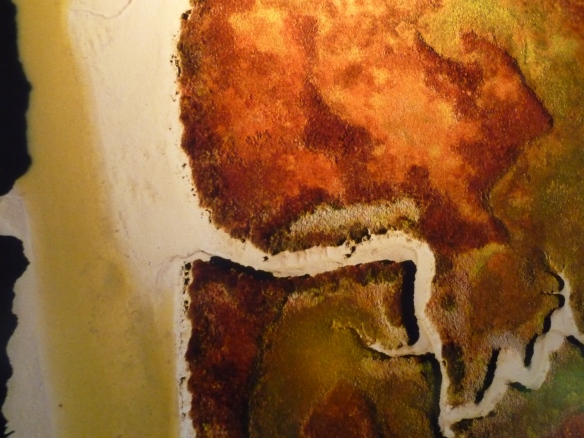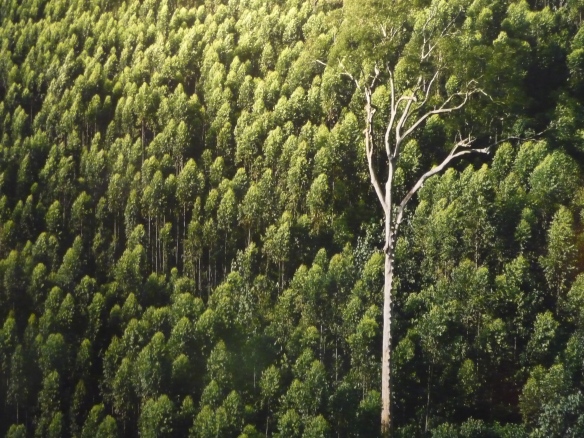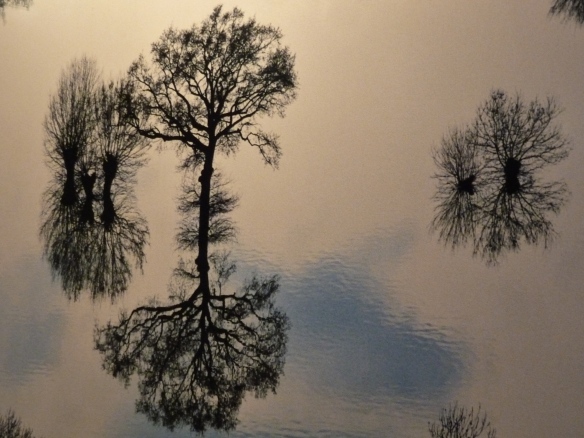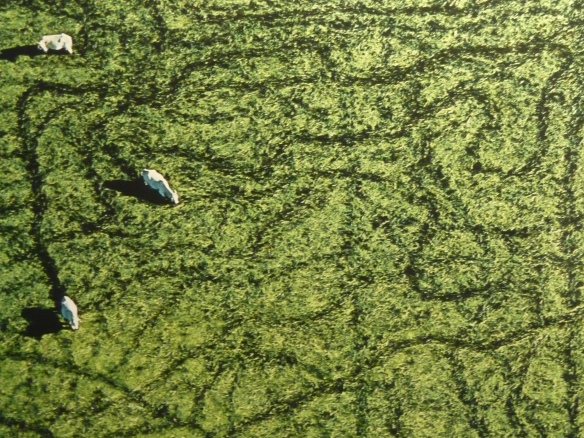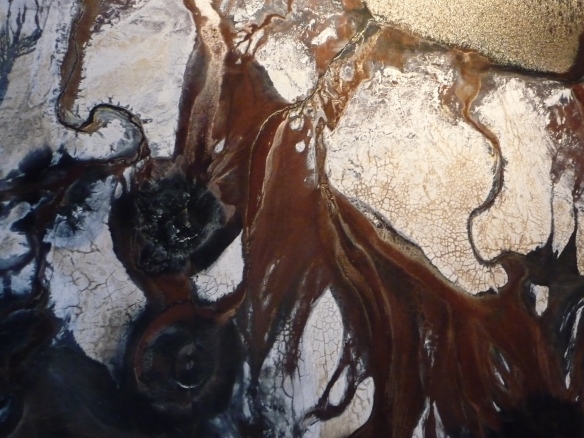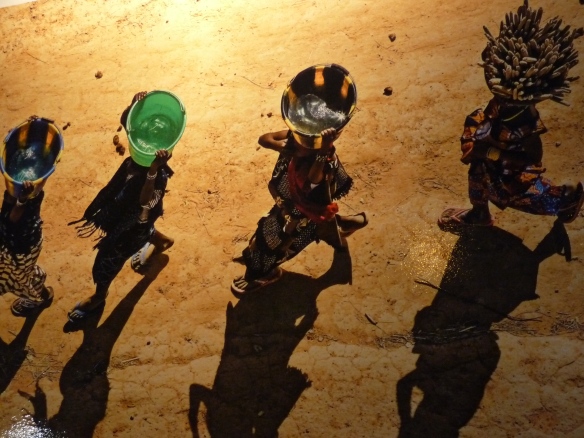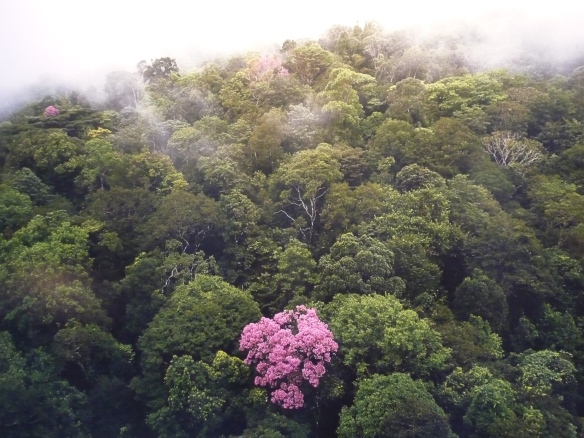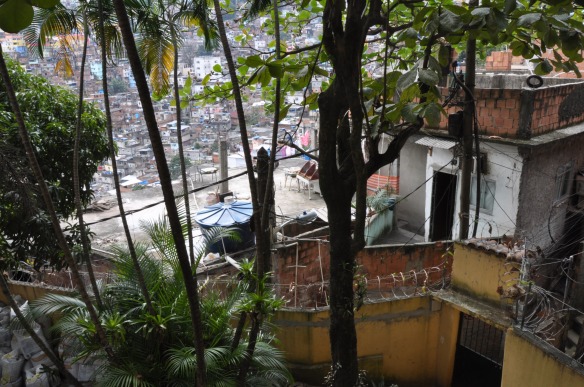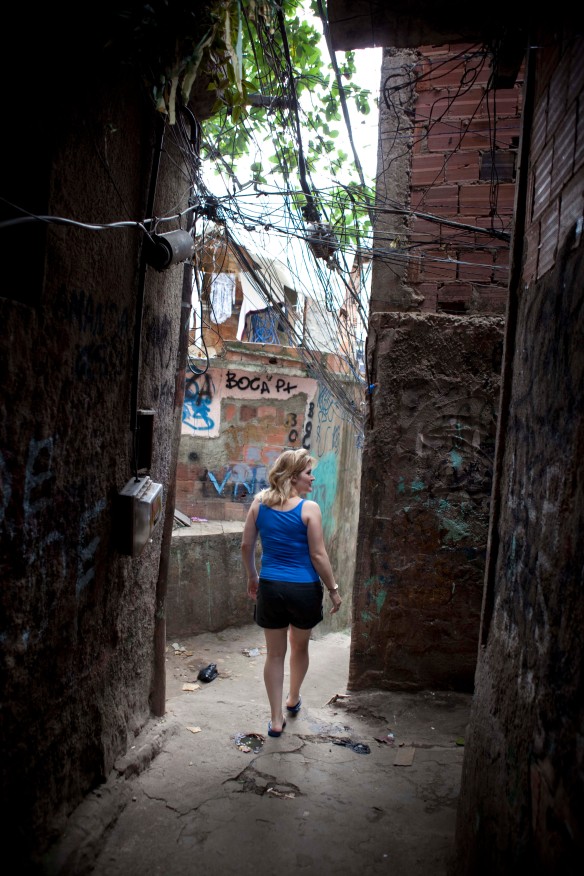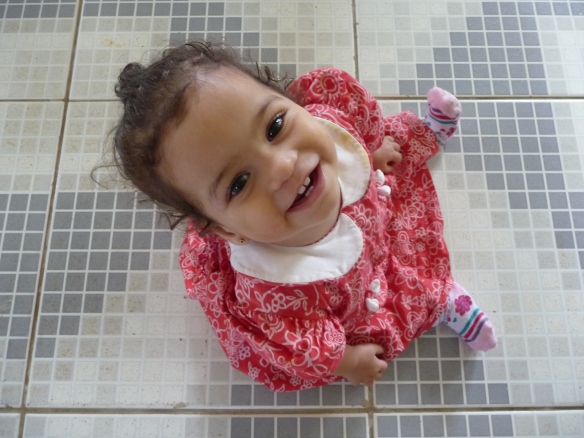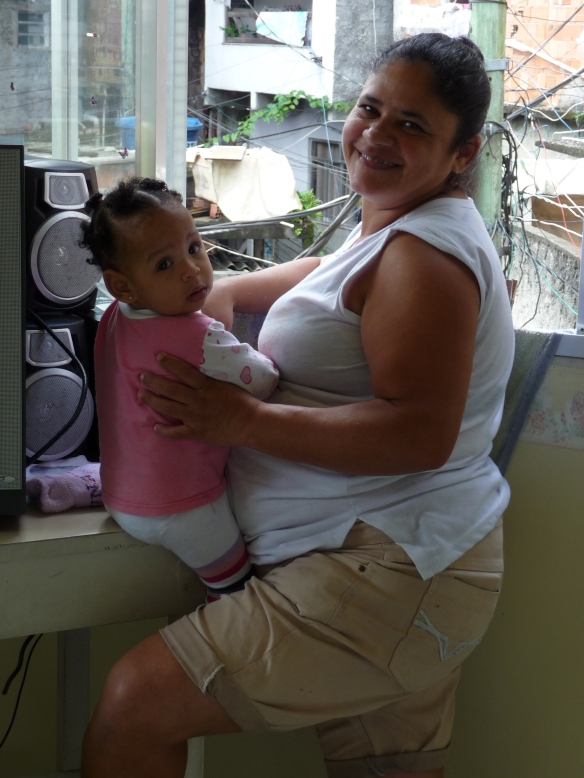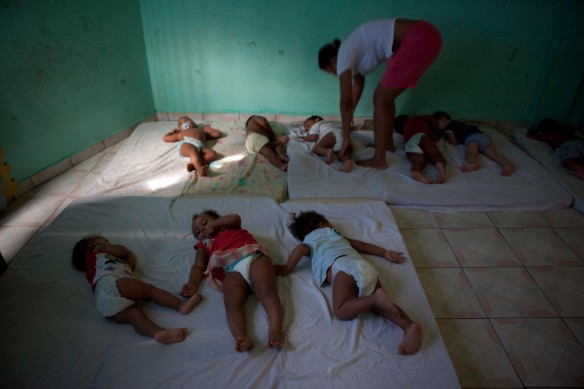Bitter winds whip at my exposed face as I make my way over to border control. Around me the early morning light paints a deceivingly warm hue over grand mountains and snow-capped volcanic scenes. A land rover hurtles past me, spraying gravel and creating a cloud of dust. Hunkering further down in into my fleece (and five layers beneath that) I hurry over the invisible line that denotes Chile and into Bolivian territory.
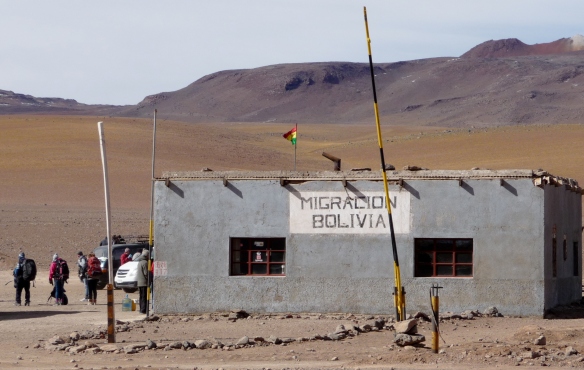
The border between Chile and Bolivia
Image by: Kate Walker
Sunlight streams through the dust covered windows of the immigration ‘shed’ I stand in. Being in seriously rugged terrain and a long way from anything civilised, one can forgive the lack of facilities and comfort immigration offers here. An elderly man seated on a three-legged stool thrusts his hand out, refuses to acknowledge me, takes my passport and without reviewing the ID page stamps me in.
Well, ‘hola’ Bolivia.
Covering my eyes with a gloved hand, I dash back to the smaller shed we parked at and join the group for breakfast. At over 4000m altitude my 50m dash leaves me heaving and narrowly avoiding a coughing fit. Wow, the air up here is dry. Not only that, it comes with about 40% less oxygen that I am used to. Recovering over a plastic up of instant ‘cafe con leche’ (the regular out here…coffee with milk), I burrow in with the French, Welsh and Kathy for body warmth.
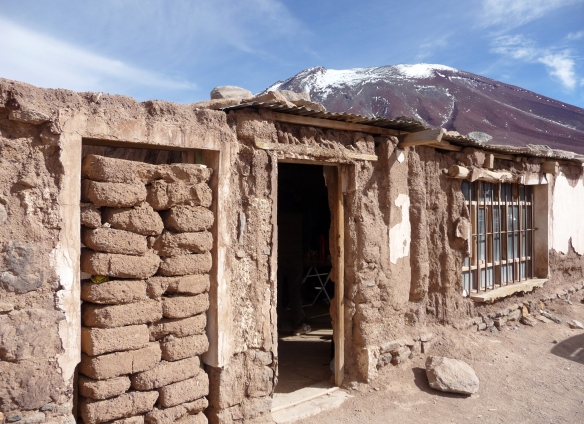
The breakfast shed
Image by: Kate Walker
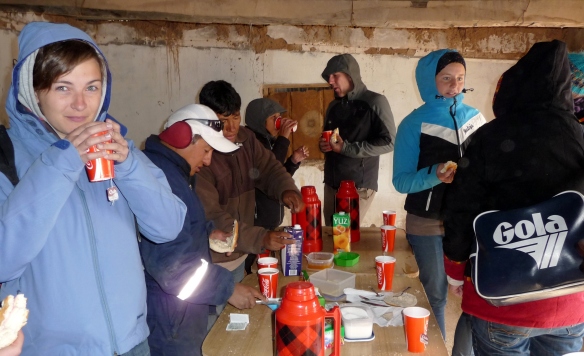
Cafe con leches and peach jam sandwhiches
Image by: Kate Walker
Edgar – our ‘Spanglish’ driver and guide joins us for peach jam sandwiches and advises us that there are no baños (loos) here. The next possible baño stop is 30 minutes drive from here. Great! Having already sipped water for hours and now cradling my second cup of hot coffee; this is not good. I think of mom and agree she would hate this. No loos and with winds being sub degree, it prevents you from discreetly dropping you pants behind a mound of rubbish.

Image by: Kate Walker
“Vamos”, Edgar shouts. We go….
I stand and watch my backpack, along with others, get thrown up onto the roof racks of our 4×4. Wrapping the load in tarpaulin and tying on additional fuel tanks on top, Edgar doesn’t even puff with the exertion. He later tells me he has been doing this for over 20 years and that it takes a lot for him to wheeze at near to what we gringos do. Fair call.
As I climb into the back of our land rover, I look back out at the scene we’re leaving. Abandoned truck skeletons lie covered in thick layers of dust, a multitude of other land rovers gear up and pull away leaving the old, unperturbed man on his three-legged stool hidden in a blanket of swirling yellow and red dust.

The only way to move around this part of the world.
Image by: Kate Walker
Here we go. Three days through Bolivian National Parks, deserts, volcanic plains, geysers, lagoons and her famous salt pans/flats (the largest in the world).

Train skeleton
Image by: Kate Walker
With six of us layered and padded for warmth, along with Kathy’s camera equipment, it’s a tight squeeze. Edgar asks us to not open the windows or play with the air vents. They must remain closed or risk choking on streams of dust. Pulling away and into the dust trail of a 4×4 in front of us, I silently ‘whoop’ with the excitement of all of this. London certainly doesn’t cough up scenes, space or the extremes I’m currently moving through. This is insane. It’s liberating and it’s only hour three of 72.
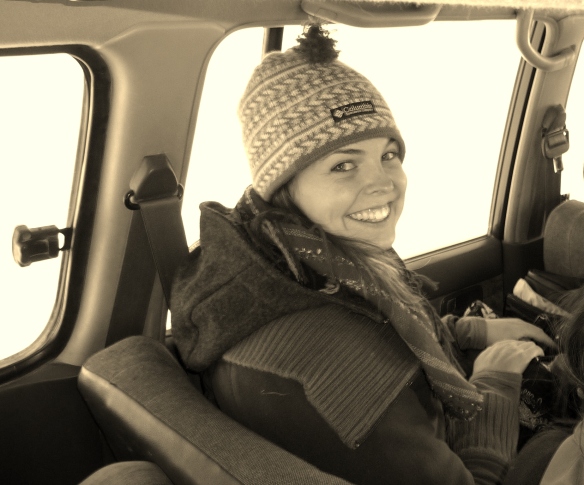
Kathy
Image by: Kate Walker

Valentine
Image by: Kate Walker

Me – happy to be back in a land rover!
Image by: Kate Walker
Clocking near to 100km/hr in our land rover, mountains and volcanoes (both dead and alive) move past at a snail’s pace outside my window. The vivid colours out here are just mesmerising. Below a crisp blue and cloudless sky lie brown, rust, orange, yellow and purple-ish undulating shapes. White, white snow lathers the tops of higher peaks, pink and yellow dust trains swirl in the air and rogue yellow tufty grasses lie flattened in the freezing winds.

Colourful landscapes
Image by: Kate Walker
Valentine – my back seat French friend – mutters “Mon Dieu”. Indeed….My God.
Thirty minutes later and Edgar slows, the land rover wheels swishing in the soft sands and gravel. We’re approaching the first of three lagoons for the day. Blanco (white) Lagoon rests in Eduardo Avaroa National Park and if you’ve never seen a winter-layered lagoon before (like me) it’s pretty special. Ice-fringed lagoon edges sparkle in the mid-morning sunlight. Soft brown muds mix with snap-frozen green and red algae. Encircling us and this colourful icy spot are even more dramatic mountain scenes. Wind-streaked clouds break the horizon and ….it’s quiet. So quiet.

Our first view of Blanco Lagoon.
Image by: Kate Walker
Being at altitude, the heart pumps faster. And here at Blanco Lagoon I can hear my heart. The thumps and pulses echo in my ears.
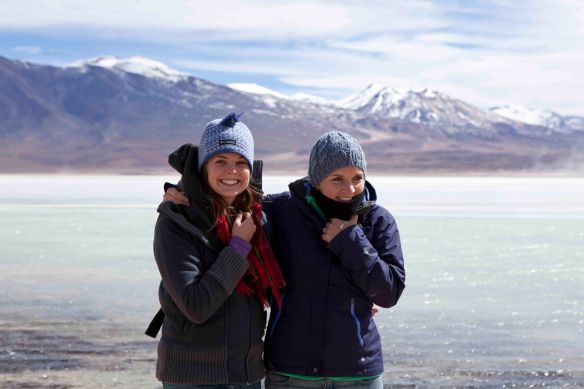
Kathy & Me at Blanco Lagoon.
Image by: © Katherine Griffiths Photography
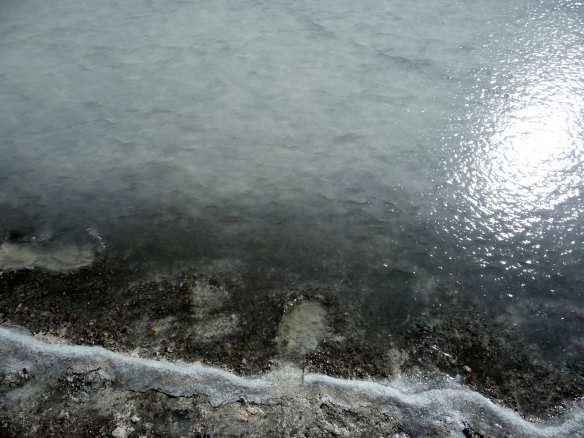
Icy shores – Blanco Lagoon
Image by: Kate Walker
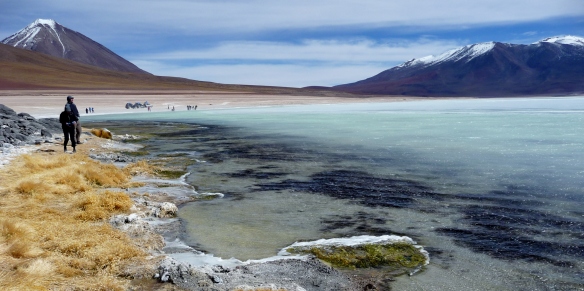
Blanco Lagoon
Image by: Kate Walker
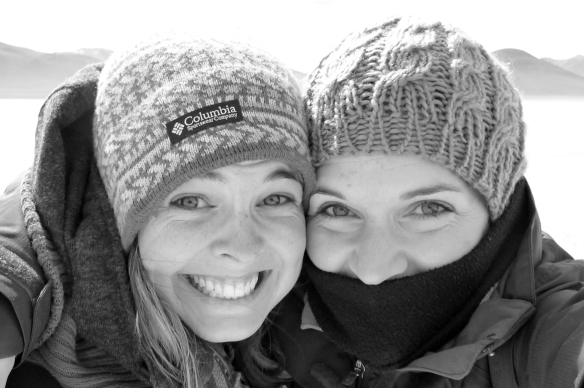
Frozen ‘chicas’ – Kate & Kathy
Image by: Kate Walker
Ten minutes is all we can bear. Wide, open lands are conducive to ‘sideways winds’ and it’s exhausting to stand out here for too long. Cramming back into our trusty 4×4 steed and with Edgar’s Bolivian tunes sounding out, it’s “vamos” once more. Again, we leave in a veil of dust and aim for a far off dust train – the ‘only’ life out here; another land rover.
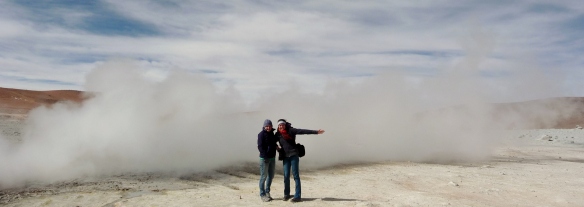
Mad geyser winds and flying grit
Image by: Kate Walker

We can only withstand a few minutes…
Image by: Kate Walker
We visit two more lagoons for the day. Verde (green) and Rojo (red). Both beautiful, wild and very different in their makeup and resulting colours. Rojo Lagoon is home to flamingoes but being winter, sadly, there are very few tip-toeing the ice-encrusted shores. Edgar tells us during summer, it’s difficult to spot a pool of water between the tens of thousands of pink legs that migrate here in the season.

Strong winds at Verde Lagoon
Image by: Kate Walker
Rojo Lagoon is my favourite. It’s huge, the reds are dramatic, the slopes down to the shores of the lagoon are not for the feint-hearted and it’s a place where you can’t help but seek a little solitude and squat with your own thoughts.
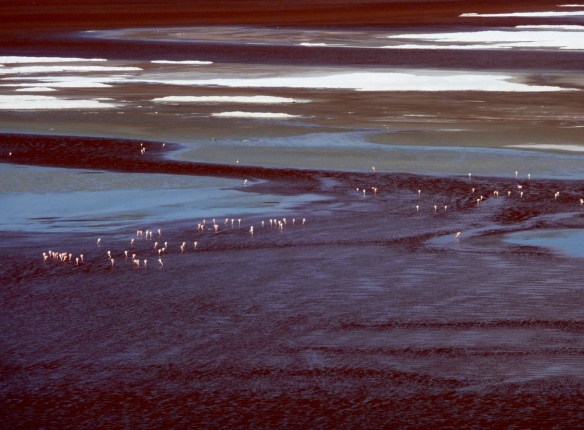
Rojo Lagoon
Image by: Kate Walker
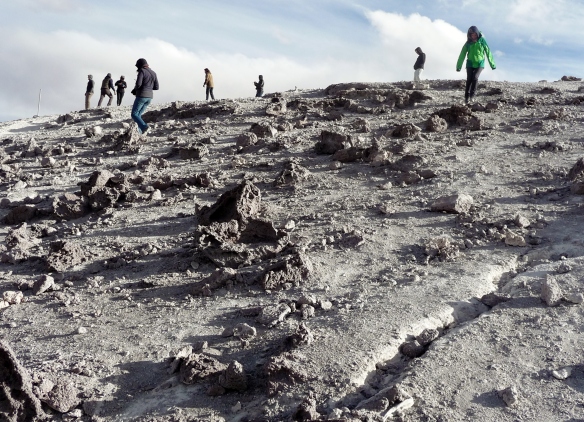
Rojo Lagoon – difficult shore slopes
Image by: Kate Walker
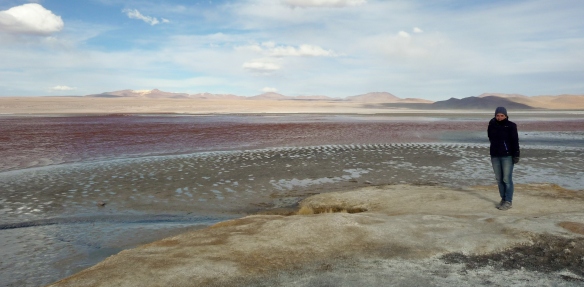
Rojo Lagoon & me
Image by: © Katherine Griffiths Photography
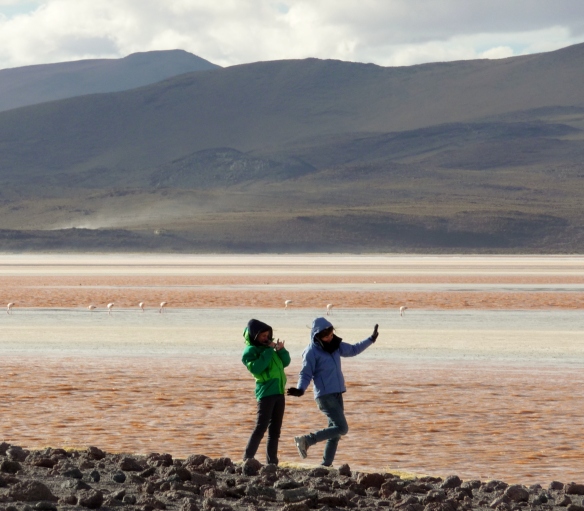
Light footed Delphine & Valentine – Rojo Lagoon
Image by: Kate Walker
Day two is all about covering distance. We settle in, the Bolivian tunes are on repeat, puffa jackets have been removed and the car is quite. Some sleep and some nurse altitude sickness. Me – I’m propped in a sunny corner and I watch incredible landscapes go by for hours. I have never seen anything like this before. I try to piece together scenes of the Judean Desert/Israel’s Dead Sea with a touch of Namibia’s sandy landscapes – but it just doesn’t work. This part of the world is completely unique and almost looks untouched and un-inhabited. The few local faces we do pass are terribly weathered. Skin that starts out as light brown quickly turns dark and before middle age, many folk look near-black in the cheeks and hands. The sun is vicious in this part of the world and coupled with that, the winds suck what moisture they can. Within one day my hand were chapped, swollen and my cuticles split and bleeding. Doing up/un-doing frozen jacket and backpack zips is an art by day three.
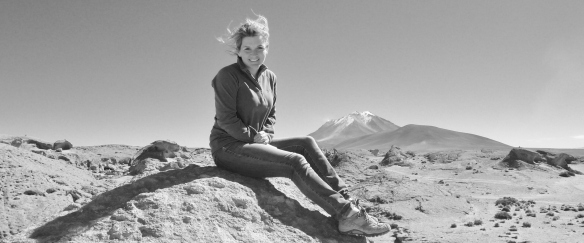
One of few active volcanoes in the region
Image by: Kate Walker
06:45 on our last morning and I’m sitting up in bed, swaddled in everything I own plus the blankets provided by our ‘Salt Hotel’ – looking out over the edges of The Salar de Uyuni. This is what we’re here for. Sunrise creeps into existence and the black and blue hues of the salt flats change to purple, pink and finally a blinding white. Again, I’m taken back by the sheer space out here. It’s salt for as far as the eye can see.
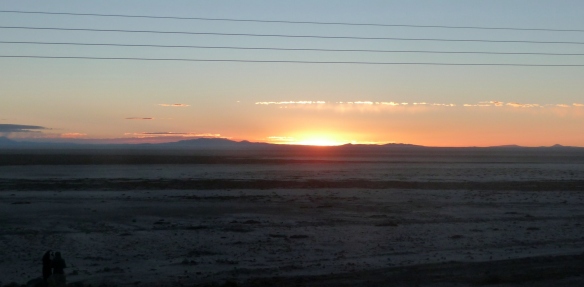
Dawn on the salt flats
Image by: Kate Walker
With hot cafe con leches lining my stomach along with a bit of dulce de leche smothered bread, Edgar has us packed up and spinning tyres in the direction of …well salt. How he knows where to drive and without navigational equipment, is beyond me. He turns and winks at me, somehow knowing my thoughts; and quietly comments that he drives this route every three days. And remember, he’s been doing this for over 20 years. I wink back and give him a small salute too.

A fellow 4×4…the only other moving object for miles on the salt pans
Image by: Kate Walker
Forty minutes later and we pull over. I laugh as there is no difference to the salt we’ve been driving over to the salt we come to stop on. But, it’s here where the fun begins. For hours our group happy-snaps away. Folk ‘hang off’ the hair braid of Delphine, our German friends traipse my horizontal body and the girls hold each other in the palms of their hands.

In the palm of their hands
Image by: © Katherine Griffiths Photography
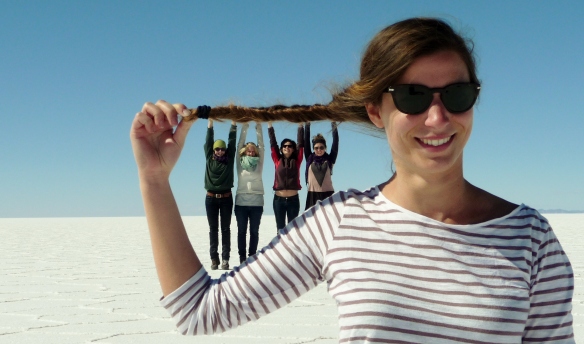
Hanging by a braid
Image by: Kate Walker

‘Walking Kate’
Image by: © Katherine Griffiths Photography

Snapped a second too soon.
Image by: Kate Walker
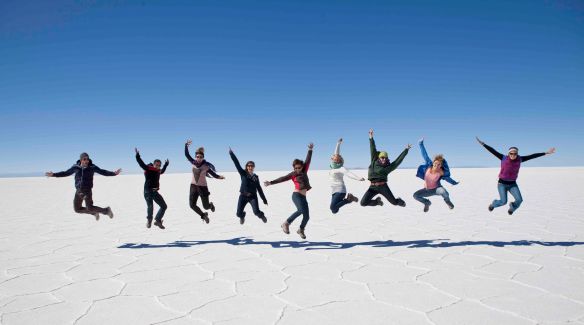
The jump shot – super fun!
Image by: © Katherine Griffiths Photography
It feels like such a short time, but apparently not. “Vamos” we hear.

Post all the fun on the salt flats. “Vamos”…we’re off again.
Image by: Kate Walker
There are more dust trains to chase and we set off – a tiny moving speck in the brilliance of the salt flats of Bolivia.
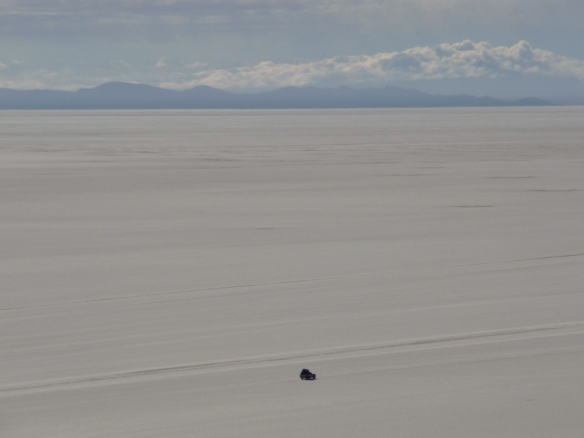
Image by: Kate Walker



